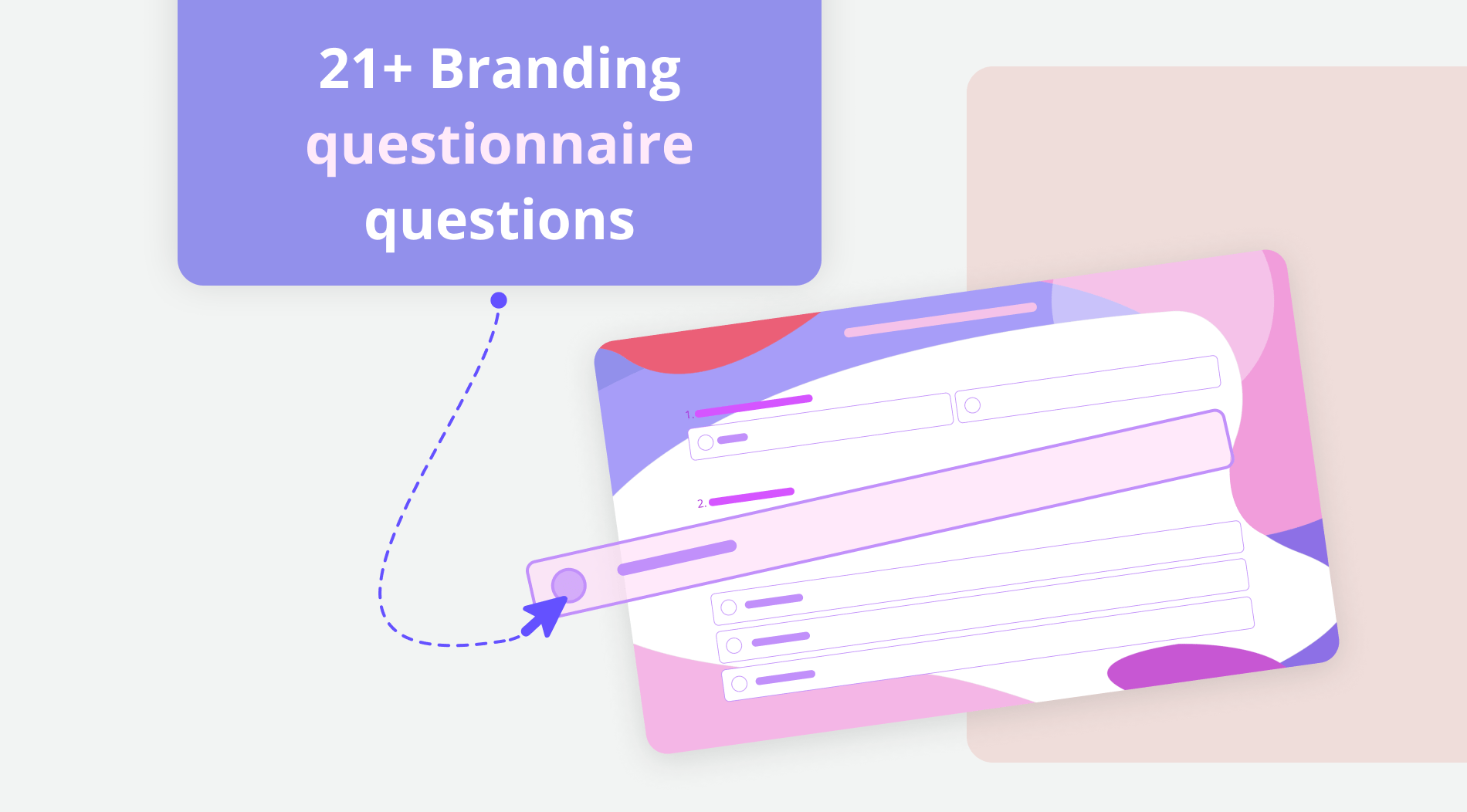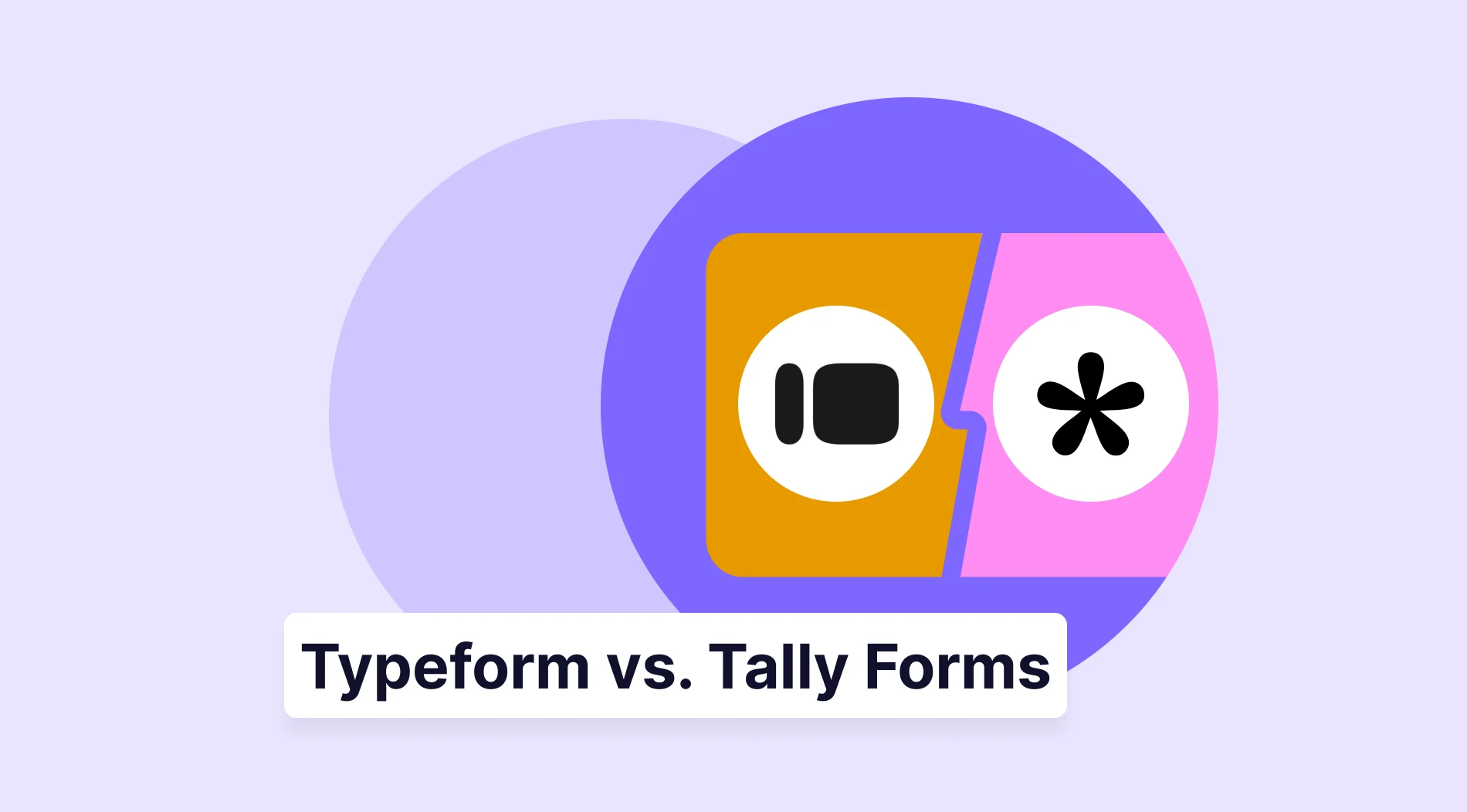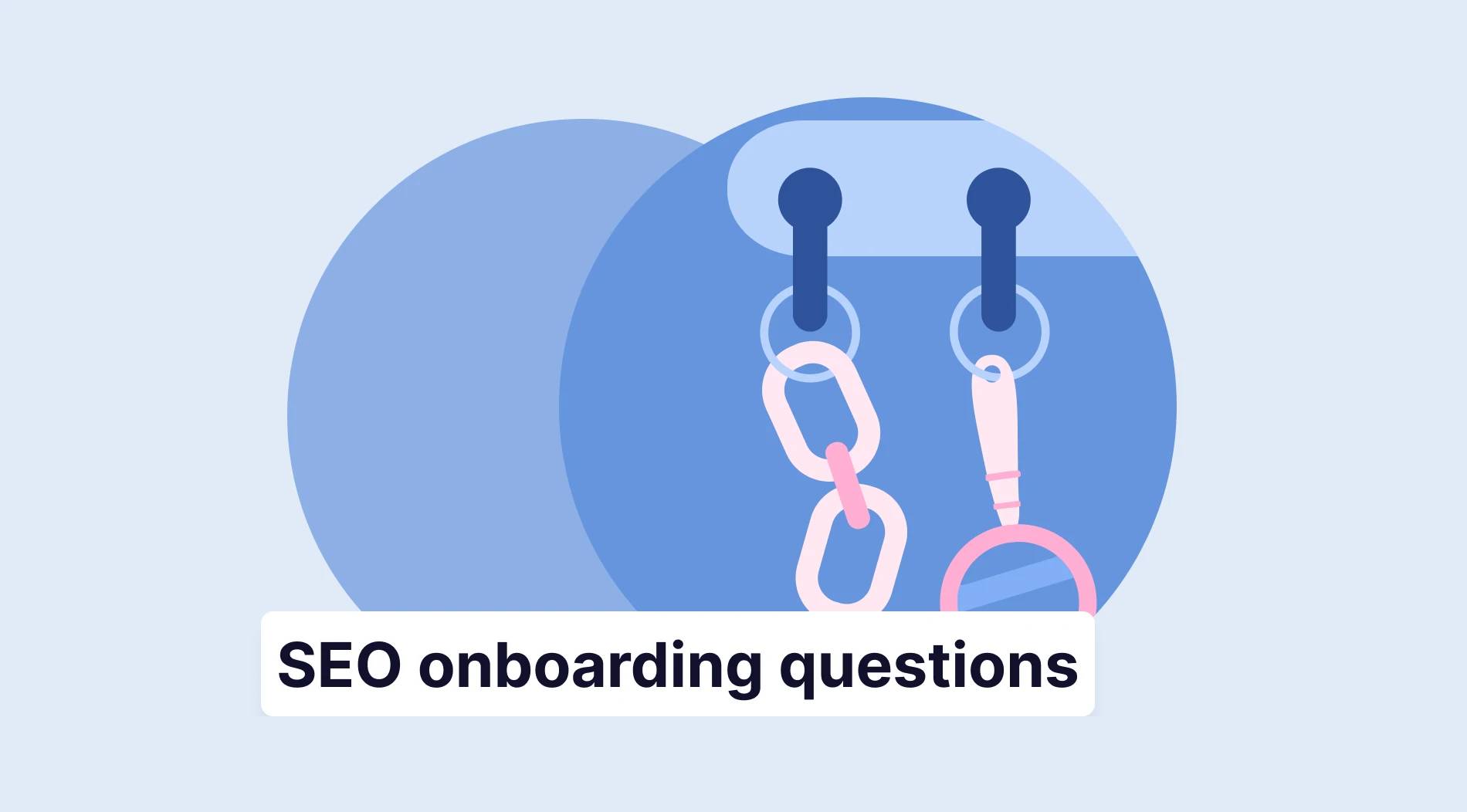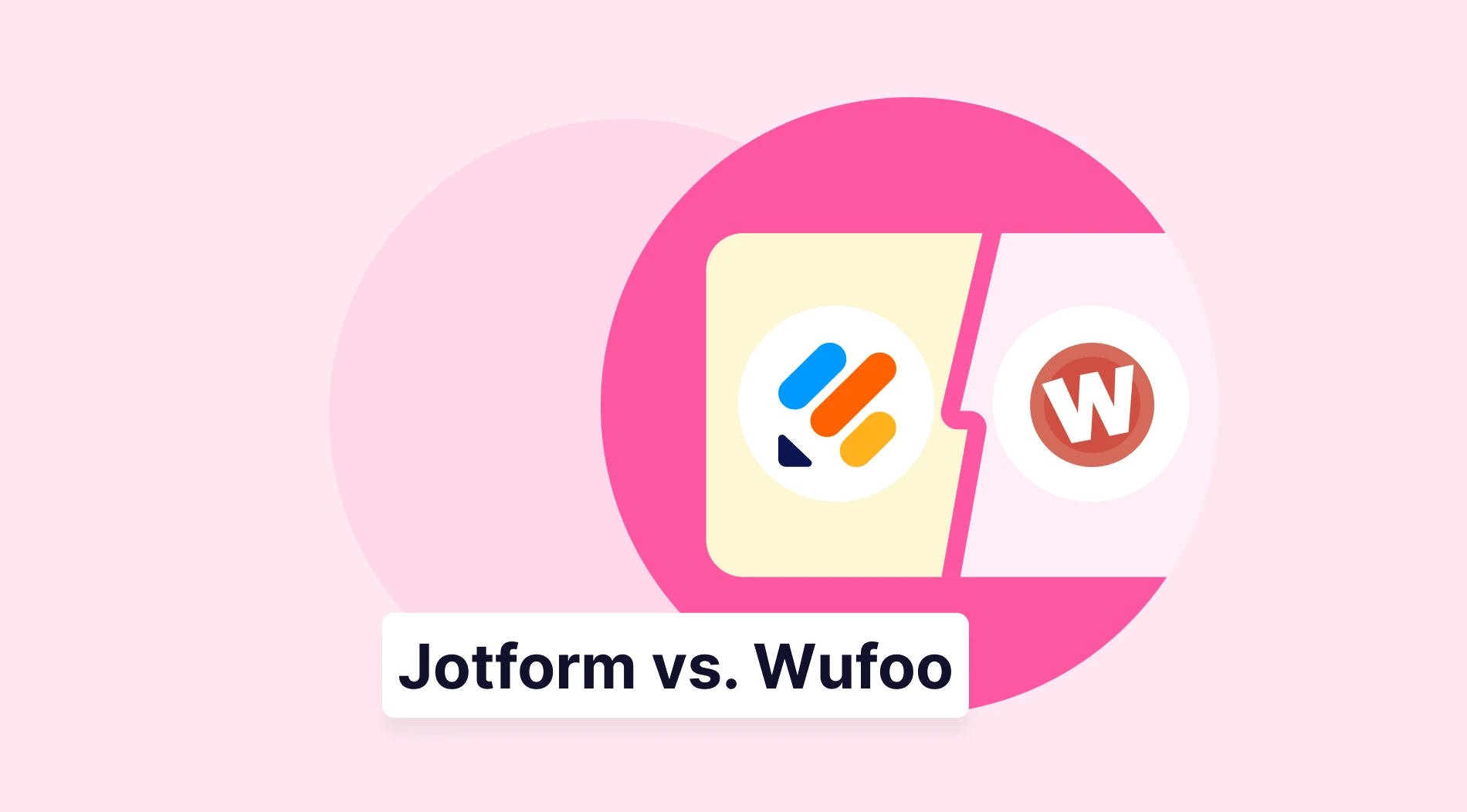In today's increasingly competitive economy, developing a strong brand identity is crucial for organizations of all sizes. Knowing your ideal customers' needs, tastes, and perceptions, on the other hand, is the bedrock of a successful branding strategy.
To achieve this, companies must perform thorough research and collect meaningful insights from their target audience. A branding questionnaire is one effective way to achieve this. In this article, we will provide you with 21 branding quiz questions. This will help you better understand your customers and create a brand that resonates with them.
What is a branding questionnaire?
A branding questionnaire is an online document with a list of questions to understand a brand’s identity, motivations, customer profile, and more. In order to learn more about a company's brand, you can use a branding questionnaire. To help develop their brand identity and businesses, marketing consultants may employ effective branding strategies through questionnaires for clients.
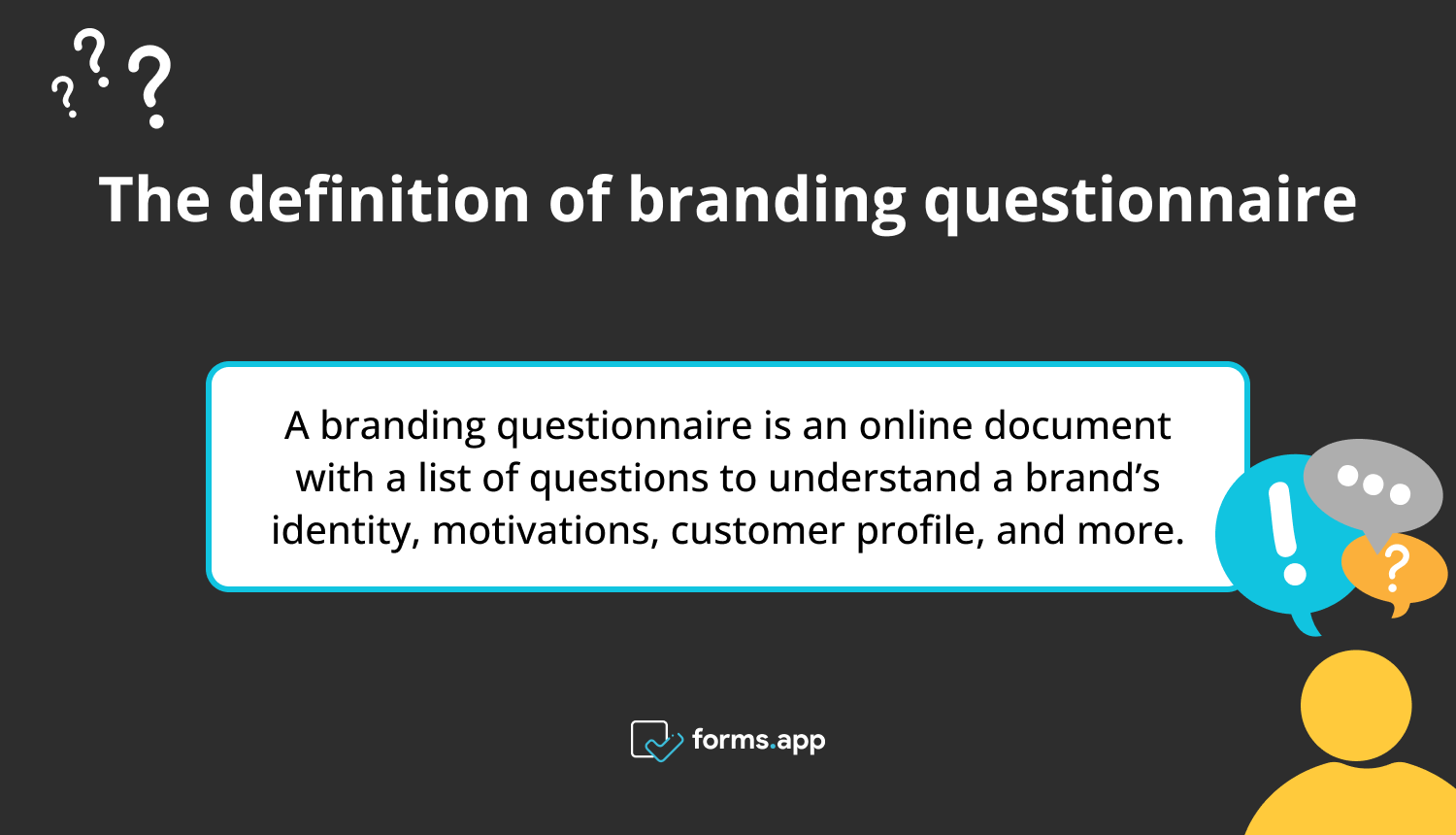
The definition of branding questionnaire
The right questions will show you the right way
The objectives of the branding effort and the distinctive qualities of the brand should all be considered while building a branding questionnaire. The questions should be created to capture as much pertinent data as possible. They should be specifically customized to the needs of the organization.
Businesses may better understand their consumers, competitors, and the state of the market by posing the proper questions. Using this data, one may then create a message and positioning that appeals to the target audience. To summarize in detail, it is important to ask the right questions for the following reasons:
1 - Recognizing the mission and values of the company: Finding the company's underlying values and mission can be accomplished by asking the right questions. These values and missions are crucial for creating a solid brand identity.
2 - Establishing the personality of a brand: Businesses may define their brand personality with the help of the proper questions. This is essential for creating effective messaging and marketing plans.
3 - Recognizing successful and unsuccessful policies: Businesses can design plans to build on their strengths and overcome their pain points by asking the correct questions, which will help them determine the brand's strengths and weaknesses.
4 - Improving brand loyalty: By gaining insight into the emotional connections that consumers have with a brand. Branding surveys can also assist organizations in fostering brand loyalty.
5 - Encouraging innovation: Businesses can encourage innovation by creating new products and services that cater to their consumers' demands. This can be done by knowing the needs and preferences of their intended audience.
21 amazing questions to use in your branding questionnaire
You can define and improve your brand with the help of a branding questionnaire. To gain a thorough understanding of your brand, its values, and its mission, use the 21 excellent questions we've prepared in this post. These questions will assist you in determining your target market and creating a distinctive brand voice.
Here is an example branding questionnaire that has been designed to get all the answers you need as an agency or a designer. You can find the questions and why you should ask them right below the form:
1 - What’s the story behind your brand? (Long text)
Understanding a brand's story can help foster a closer bond between the company and its target audience. Information about a brand's founders, the idea that inspired it, and the path the brand followed to get to where it is today may all be found in the brand's origin story.
2 - As a brand, who is your target audience? (Multiple selection)
Understanding your target market is critical if you want to develop marketing strategies. This will appeal to your clients and improve sales and engagement. If you have a good understanding of your target audience's personality, you may change your branding and content to match their preferences and needs.
Here are some options you can use as answers:
- Healthcare and medical professionals
- Finance and banking professionals
- Education and academic professionals
- Technology and IT professionals
- Marketing and advertising professionals
- Creative professionals (designers, artists, writers)
- Tourism professionals
- Legal professionals
- Government and public sector employees
- Non-profit and charity workers
3 - What are the most important features and attributes of your products or services? (Multiple selection)
It's crucial to understand the unique features of your products and services. Understanding these features can help attract your target audience. This information can guide your marketing strategy to highlight the benefits of your brand. This leads to increased sales and customer loyalty.
Here are some options you can use as answers:
- Quality
- Reliability
- Innovation
- Design
- Durability
- Convenience
- Safety
- Customer service
- Other
4 - What are the most popular products or services that your brand offers? (Short text)
By knowing which offerings are most popular, the brand can concentrate its efforts on advertising and enhancing these goods or services to better suit customers' wants and preferences by knowing which offerings are most well-liked. The answer to this question can help guide the brand's product development and marketing initiatives.
5 - What are the primary goals of your brand? (Long text)
This question might reveal the reasons for the brand's conception as well as the long-term objectives it seeks to realize. Possible responses: goals for expansion, client satisfaction, market share, social impact, innovation, or other key performance indicators.
6 - How strongly do you agree or disagree with the statement: "Our brand provides high-quality products/services"? (Opinion scale)
The purpose of this question is to assess the managers' perception of the brand's product/service quality. The opinion scale ranges from strongly agreeing to strongly disagreeing. The survey taker can choose where they fall on the scale based on their personal experience or perception of the brand's products or services.
7 - How would you rate the level of communication provided by your brand? (Star rating)
The answers to this question might give the company insightful feedback on the success of the communication strategy. Also, they can point out areas where they can make improvements. This question helps brands determine how effectively they address clients' communication needs. It can also aid in refining communication strategies to increase customer satisfaction.
8 - What makes your brand different from your competitors? (Long text)
Asking this question can help businesses understand the unique standing point of their brand. Companies can identify areas for improvement to gain a competitive advantage. They can adapt their offerings to better align with customer preferences and improve satisfaction.
9 - What is the size of your business? (Single selection)
Understanding the size of the respondent's business can help companies segment their target market. This can also help them tailor their marketing strategies to different business sizes. This information can be used to compare the company's customer base to that of its competitors.
Here are some options you can use as answers:
- Sole owned business
- Small business (less than 50 employees)
- Medium business (50-250 employees)
- Large business (more than 250 employees)
10 - How does your brand handle customer complaints? (Single selection)
Understanding how a brand handles customer complaints can help companies improve their customer service processes. They can identify areas for improvement in their products or services. Here are some options you can use as answers:
- Quickly and efficiently
- Individual basis
- Other
11 - What is your brand's reputation in the relevant industry? (Single selection)
The brand's reputation affects the company's ability to attract investors. Analyzing the industry's reputation can help companies plan to increase investor appeal. Here are some options you can use as answers:
- Unknown
- Poor
- Moderate
- Excellent
12 - On a scale of 1-5, how successful is your brand's policy about the environment? (Opinion scale)
Environmental restrictions frequently apply to businesses with related practices. Companies can make sure that the appropriate regulations are followed. This can be done by evaluating the effectiveness of their policies.
13 - What is your brand's customer acquisition strategy? (Long text)
A brand's customer acquisition strategy reveals insights into its marketing and sales effectiveness and its understanding of competition. The candidate's response should demonstrate their ability to identify and target their ideal customer demographics.
14 - How would you describe your brand's visual identity (logo, colors, typography, imagery, etc.)? (Short text)
Brands can ensure visual appeal to their target market and maintain consistency across all branding materials. Understanding a brand's visual identity can also help identify areas that need improvement to better reflect the company's personality and values.
15 - How do you want your customers to perceive your brand? (Long text)
Companies can create a comprehensive branding plan that aligns with their desired perception. This involves establishing emotional visual components, crafting resonant language, and developing marketing strategies. Companies can also ensure consistent brand perception at all customer touchpoints.
16 - How do you stay up-to-date with the latest industry trends and developments? (Multiple selection)
The purpose of this question could be to gain insights into the methods and resources that a person or organization uses to stay informed about the latest industry trends and developments. To make better decisions, spot new opportunities, and maintain industry competition, this data may be used.
Here are some options you can use as answers:
- Participate in trade fairs and activities
- Browse blogs and industry publications
- Observe thought leaders in your field on social media
- Connect with other industry experts through networking
- Market research and industry report analysis
- Conduct customer focus groups or surveys.
- Other
17 - What are the biggest threats or challenges facing your brand? (Multiple selection)
Respondents are asked to consider a number of potential stumbling blocks, including shifting customer preferences. This can also include new competitors, technological disruptions, negative publicity, economic downturns, and regulatory changes.
Here are some options you can use as answers:
- Increasing competition in the market
- Economic uncertainty
- Changes in consumer preferences or behaviors
- Negative public perception
- Regulatory changes
- Shortage of skilled workforce
- Other
18 - How do you measure and track the success of your marketing campaigns? (Long text)
Learning how a brand measures and monitors marketing performance can reveal insights into marketing tactics. This question demonstrates information about a candidate's ability to achieve marketing objectives.
19 - What are the most important values or attributes that you want to be associated with your brand? (Long text)
Understanding the key values and characteristics that a brand wants consumers to associate with it can be helpful in creating a brand identity. This can also help maintain consistency in messaging, tone, and visuals.
20 - How satisfied are you with your current brand positioning? (Opinion scale)
If a brand has recently made changes to their positioning, asking about satisfaction can help measure the success of those efforts. A brand can compare customer satisfaction with brand positioning across different brands or industries. Thus, it can gain insights into industry benchmarks and best practices.
21 - How often do you conduct market research to audit your branding strategies? (Single selection)
This question can help a brand understand how often they are conducting market research to auşit their branding strategies. Thus, it can help them identify any gaps in their research efforts. By tracking research frequency over time, a brand can measure the impact of their research efforts on the success of their branding strategies.
Here are some options you can use as answers:
- At least once a year
- Every 6 months
- Every quarter
- Every month
- As needed
- Never
How to create your own branding questionnaire (for free)
Using the free and simple online form builder, forms.app, you can create your own branding questionnaire. The steps to creating your branding questionnaire are as follows:
1 - Create a forms.app account and log in.
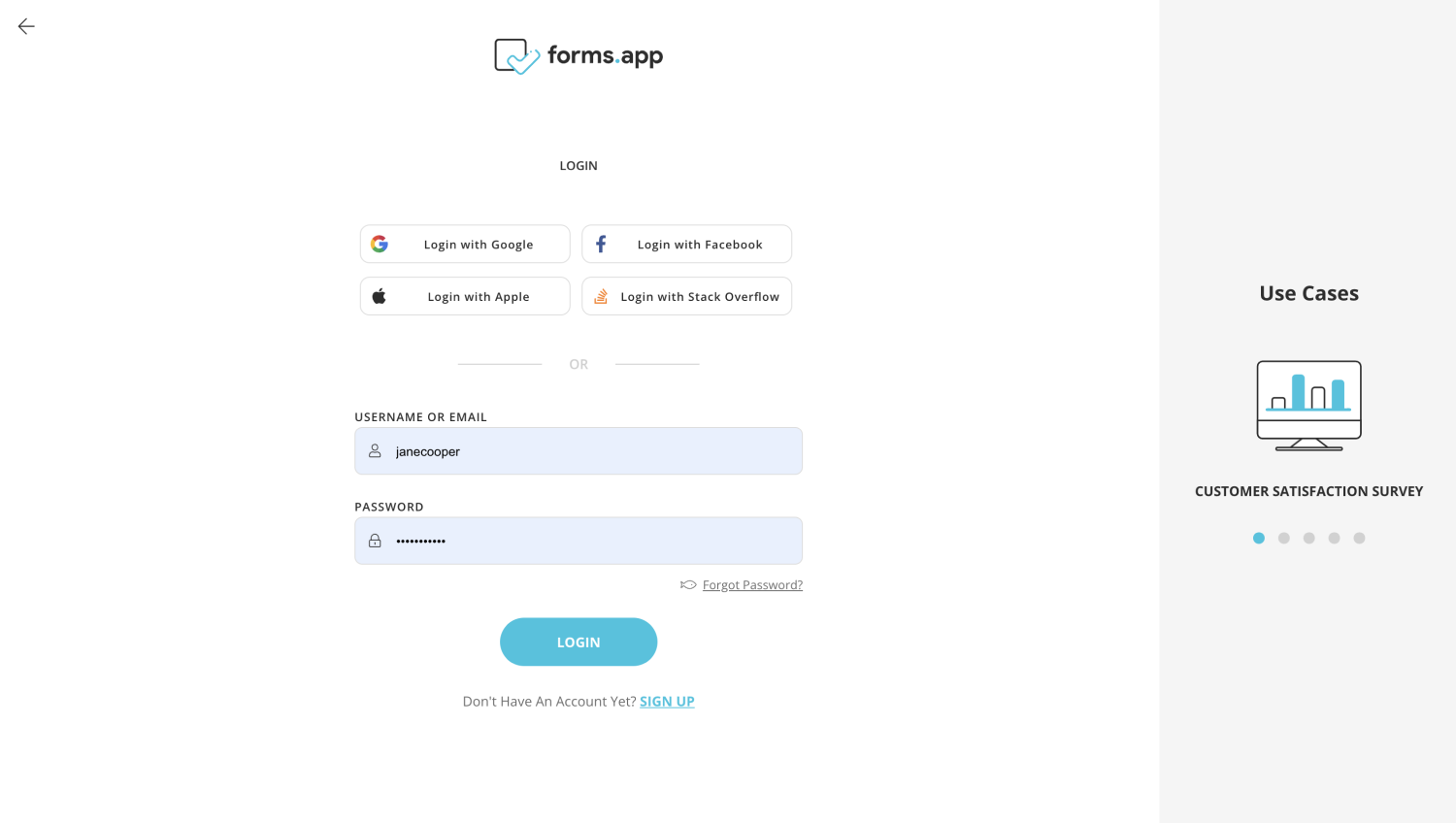
Log in to your forms.app account
2 - You can choose “Blank”, or you can use a template.
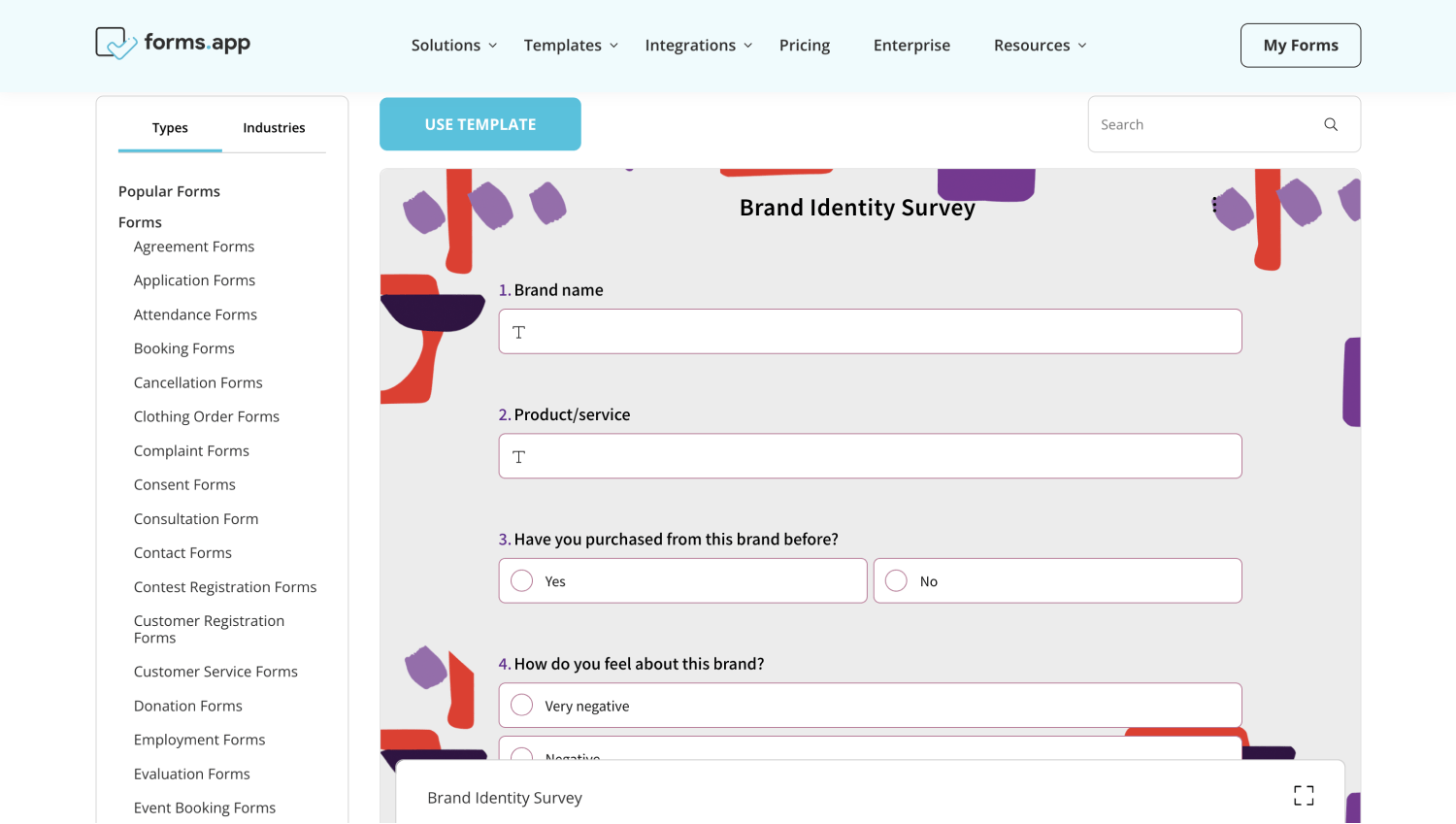
Choose a template
3 - Select the question type, such as multiple choice, short answer, or long answer. Click the “Add Field” button and add your own branding questionnaire questions.
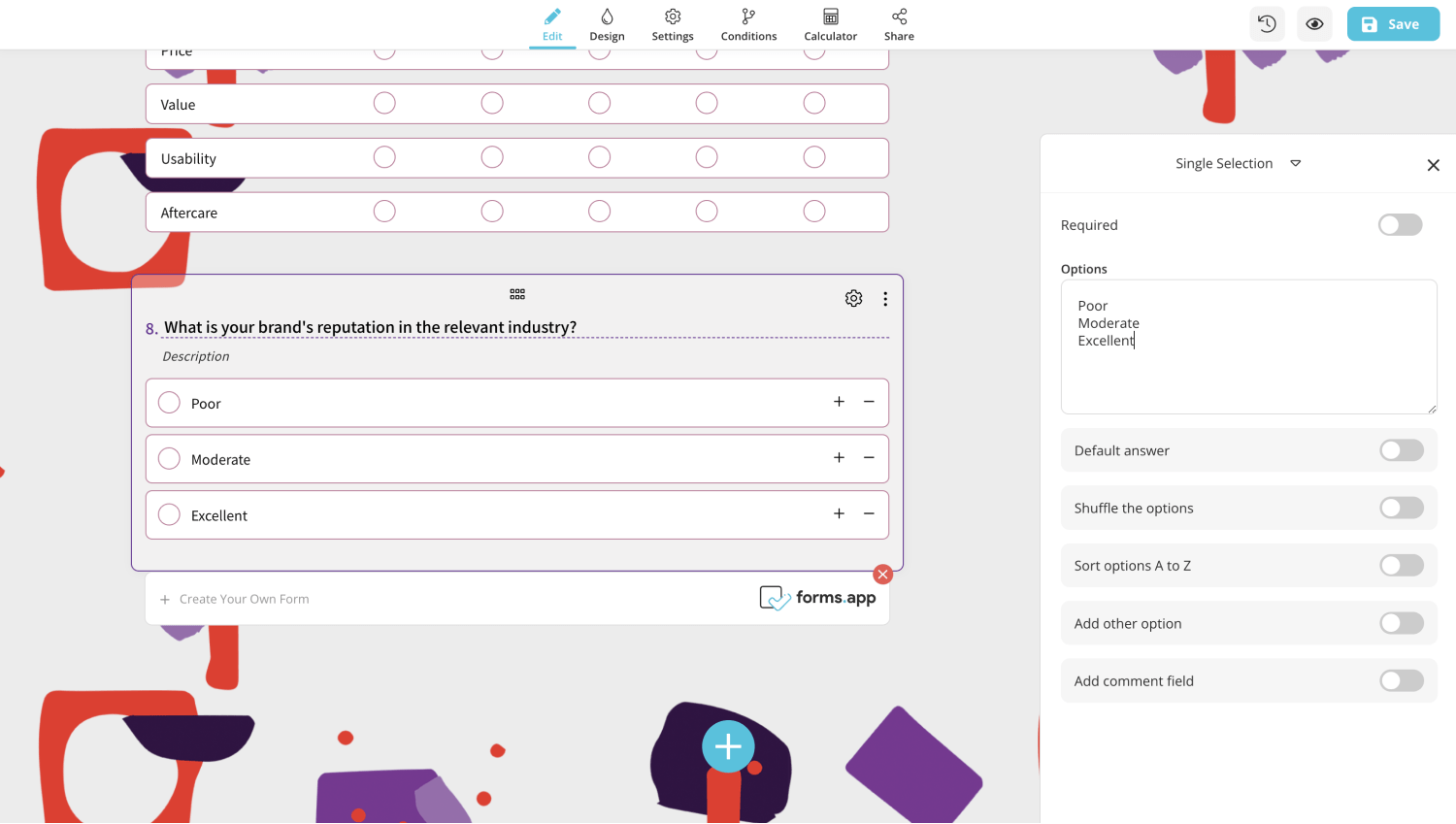
Add questions to your form
4 - Choose a theme, select colors and fonts. You can add your own logo or branding components to personalize the look of your brand identity questionnaire.
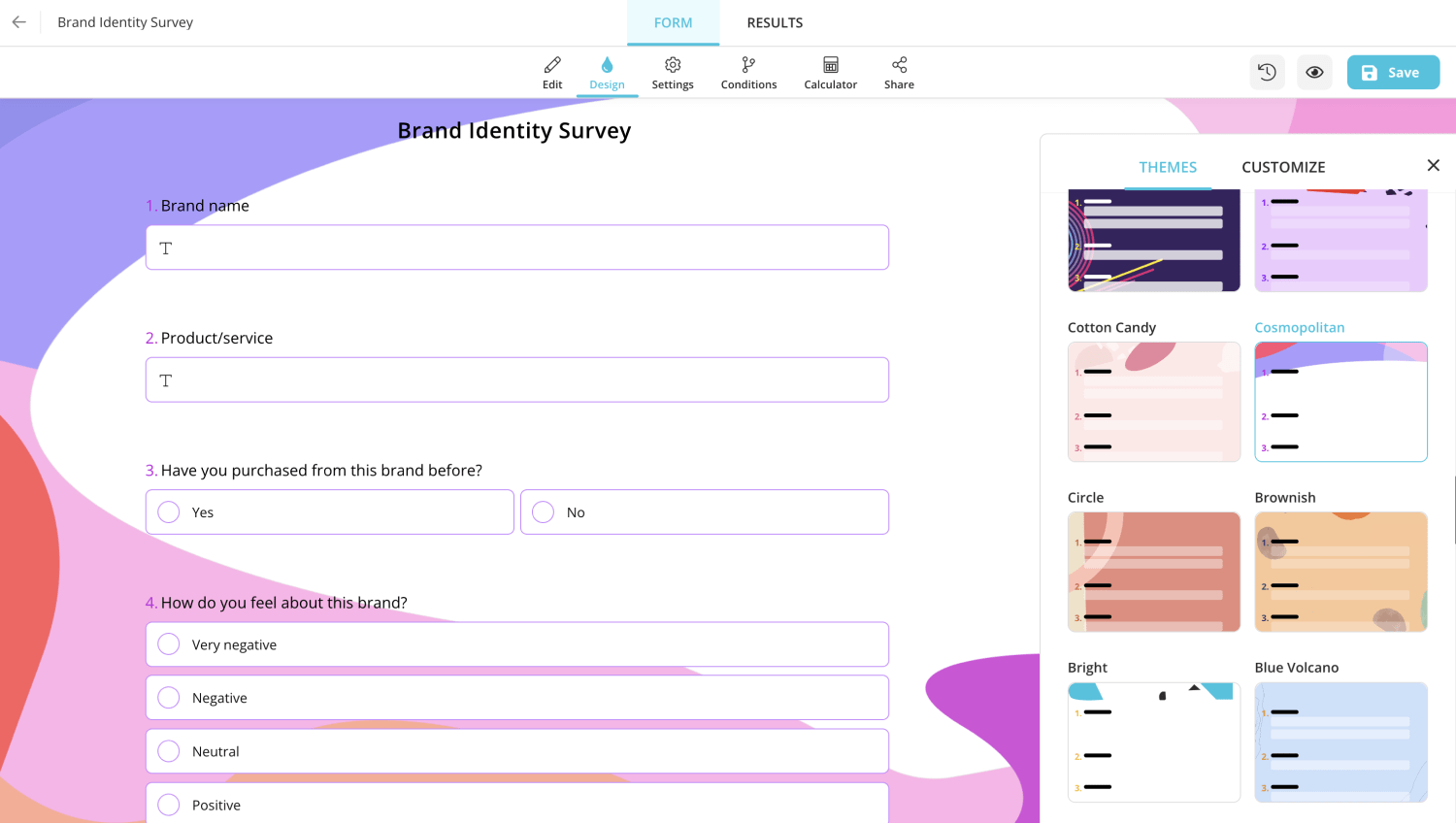
Customize your form design
5 - Lastly, share your form on social media or simply embed it on a web page.
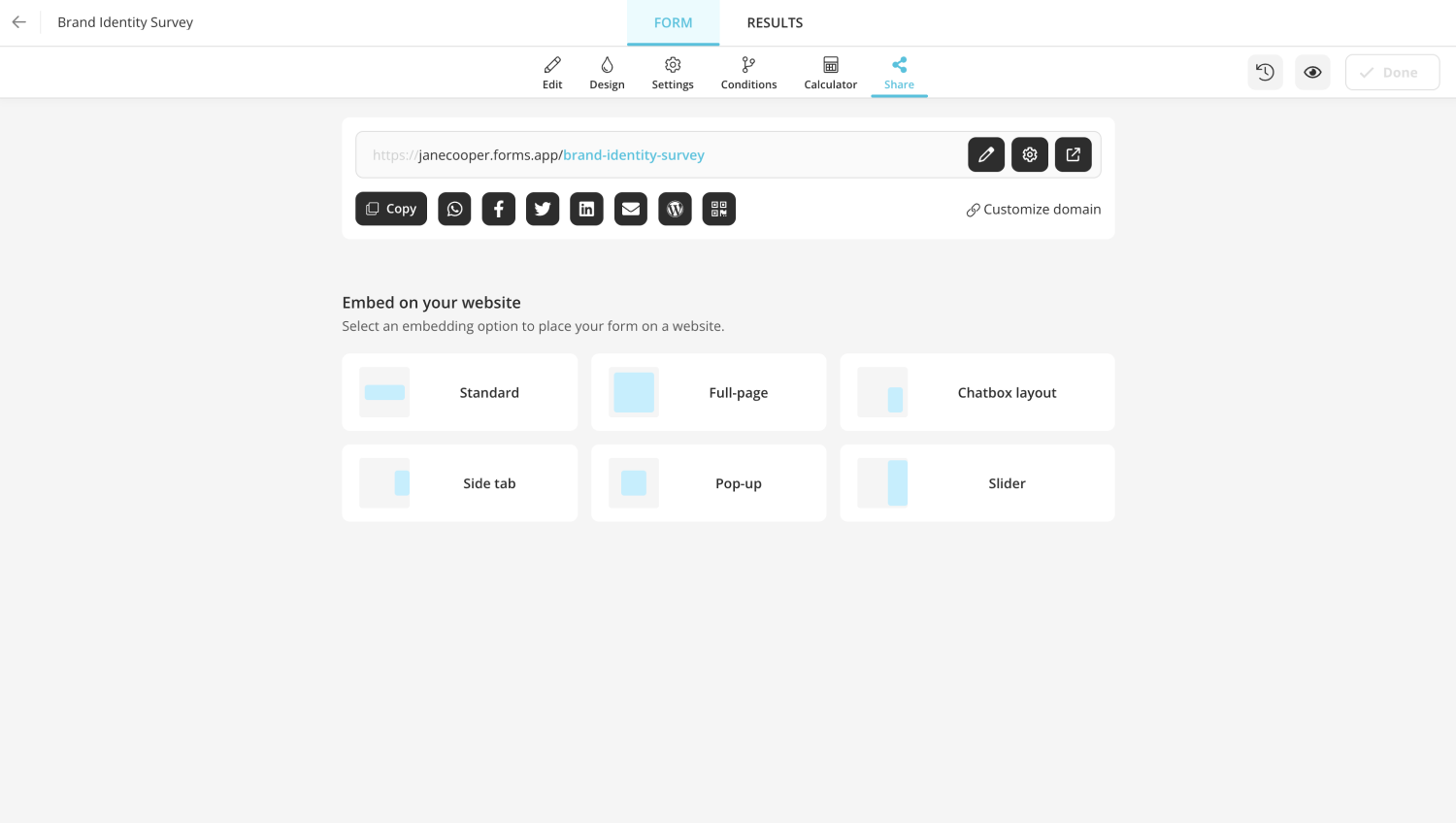
Share or embed your branding questionnaire
Key points to take away
When creating a branding questionnaire, it's important to consider some key points to gather relevant and useful information. Here are the most important ones to keep in mind:
- Use language that your target audience will understand, and tailor the questions to fit their needs.
- Employ a variety of question styles, including open-ended and rating scales, to collect data that is both quantitative and qualitative.
- To boost response rates and reduce drop-offs, keep the questionnaire brief. Ask no more than necessary, and don't ask questions that are pointless or irrelevant.
- To make sure the questions are straightforward and simple to comprehend, test the questionnaire with a small sample of people.
- Incorporate questions regarding the target market's perceptions of the brand and its goods and services.
- Add questions about competitors’ goods and services to your questionnaire.
- Include questions concerning the greatest difficulties or risks the brand is now facing.
This article on branding questionnaires is a useful resource for organizations, agencies, and marketers. It contains a series of questions covering a wide range of subjects. These questions are related to the preferences of the target audience, helping to gain a deeper understanding of effective branding strategies.
By creating a branding questionnaire and using the questions above, you can develop a brand strategy, brand voice, and a consistent visual identity, whether it is for your client's brand or your own.
However, it's important to remember that every business is unique, and the questions you include in your questionnaire should be tailored to your specific industry and target audience. The questions in this article can serve as a starting point for businesses looking to create their own branding questionnaire. Take a look at forms.app and start your questionnaire journey!
forms.app, your free form builder
- Unlimited views
- Unlimited questions
- Unlimited notifications
